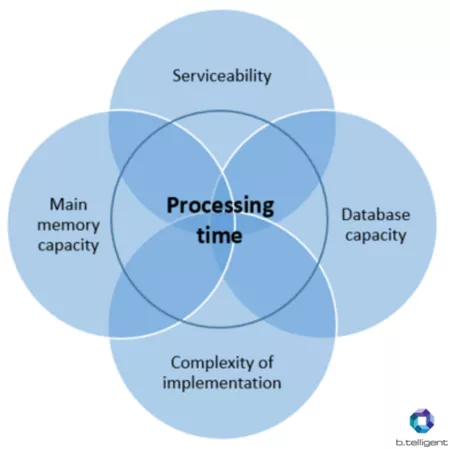Performance optimisations are not set in stone: optimisations that have worked extremely well at a company with a certain system architecture and a certain volume of data will not necessarily work equally well elsewhere. In other words, individual solutions are required. Fundamentally, however, the key point is always to find the right balance between main memory and database capacity, and between implementation complexity and serviceability. The focus is always on processing time.
As we´ve learned in the previous article, using cache tables in SAP BW transformations is still useful even with an in-memory database such as HANA. Cache tables in this context are internal ABAP tables that are created and populated during data transformation processes (DTP). The tables are useful in particular when implementation logic needs to be applied in ABAP routines, and the transformations therefore cannot be processed in the SAP HANA database.
Often, all you need to do is duplicate or delete the data lines. This is best done with block operations. In other cases, lookups are required:
In lookups, information from one or more other database tables is added to each, hopefully relevant data record. The correct lookup structure in these cases is critical to the BW transformation performance.
Using an example that I have recently repeatedly come across in practice, this series will explore possible implementation techniques for the development of high-performance lookups.
Read our six-part series on "HIGH-PERFORMANCE LOOKUPS IN BW TRANSFORMATIONS IN PRACTICE", which will explain in detail the most common practical questions. The table below gives a summary of the areas covered:
- Introduction
- Internal tables vs. SELECTS from the HANA database (Part 2)
- Selecting the right type of table (Part 3)
- Finding the relevant data records (Part 4)
- Initial aggregation of selected data (Part 5)
Learn more about the topic in the next weeks and have a look at our DWH & BI blog!








